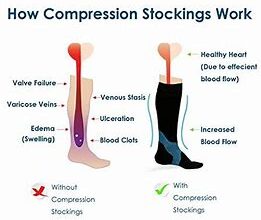Teaching your child spatial orientation skills is such an important aspect of their overall development. These skills not only work to boost their understanding of spatial concepts, but they also encourage hand-eye coordination and strategic thinking. One effective way to teach these skills is through fun games that involve spatial awareness and problem-solving.
One game that helps improve spatial orientation is Tangram. Tangram is a puzzle game that involves using different geometric shapes to form a picture. It challenges children to think about the angles and areas of different triangles and how they can fit together to create a specific shape. Playing Tangram not only enhances their spatial awareness, but it also improves their decision-making skills as they try to find the best way to fit the pieces together.
Another game that can help improve spatial orientation skills is Simon Says. This game requires children to follow simple commands given by the leader, Simon. Simon may ask them to touch their nose, grab their ears, or move their hands to different areas of their body. This game not only works on their hand-eye coordination but also helps them understand their body’s position in space.
Additionally, playing puzzle games can also be effective in improving spatial orientation skills. These games often require children to move objects or solve problems in a specific environment. By doing so, they have to think about how different objects relate to each other and how they can move within the given space. Puzzle games challenge their problem-solving abilities and improve their overall spatial reasoning.
In conclusion, teaching spatial orientation skills to children is crucial for their overall development. Fun games like Tangram, Simon Says, and puzzle games can help enhance their understanding of spatial concepts, improve their hand-eye coordination, and boost their decision-making skills. By incorporating these games into their playtime, you can give your child a solid foundation in spatial orientation that will benefit them in subjects such as math, science, and even everyday life challenges.
Why Teach Your Child Spatial Orientation

Spatial orientation is a crucial skill that children need to develop in order to navigate and interact with the world around them. It involves the ability to understand and manipulate objects in space, as well as to create mental representations of their surroundings.
By teaching your child spatial orientation, you are giving them the tools they need to better understand their own lives and the world they live in. This skill allows them to perform a variety of tasks, such as arranging objects in a picture, figuring out the best way to move through an obstacle course, or even reading a map.
Improving spatial orientation skills can also help children in other areas of their development. It can enhance their hand-eye coordination, fine motor skills, and problem-solving abilities. Children who have good spatial orientation skills are often better at math and science, as well as art and music.
There are many fun games and activities that can help teach your child spatial orientation. Incorporating these into your child’s playtime can provide them with valuable opportunities to practice and improve their spatial skills. For example, you can play games like “Simon Says” or “Follow the Leader” that require your child to follow and mimic different movements with their body. You can also give them different sizes and shapes of objects to manipulate and arrange, such as blocks or tangrams, which can help them develop a better understanding of spatial relationships.
Playing outside in the backyard can also be a great way for your child to develop spatial orientation skills. They can explore different spaces and obstacles, such as climbing over a jungle gym or crawling through a tunnel. These activities require them to use their body and senses to navigate and interact with their environment, which in turn helps improve their spatial awareness.
In conclusion, teaching your child spatial orientation is a valuable investment in their future. It can help them become better problem solvers, enhance their motor skills, and give them a unique advantage in various academic and artistic pursuits. So, take the time to play and engage with your child in activities that involve spatial orientation – it will not only be fun but also highly beneficial for their overall development.
Developing Essential Skills
Simon says, a classic game that involves following instructions, can help develop spatial orientation skills. By incorporating simple actions like touching your nose or catching a ball with your hand, children learn to understand and think about different spatial concepts.
Playing with puzzles and completing maps with obstacles will give children opportunities to solve problems and develop their spatial awareness. They can think about how to navigate around different areas and angles, enhancing their ability to read and understand maps.
Living in a three-dimensional world, it is crucial for children to develop spatial orientation skills. Understanding concepts such as triangles and angles will not only boost their ability to solve spatial problems, but also increase their awareness of physical aspects in their environment.
Furthermore, playing games that involve physical activity, such as ball games, fosters hand-eye coordination and enhances spatial awareness. Children can experiment with different actions and movements, which in turn helps them become more aware of their body in space.
By incorporating these fun games and activities into their daily lives, parents can help their children develop essential spatial orientation skills that will benefit them in various subjects and even in reading maps or solving puzzles later on.
Enhancing Problem-Solving Abilities

Playing fun games can not only provide entertainment for your child but also enhance their problem-solving abilities. By engaging in activities that require spatial orientation skills, children can develop a better understanding of concepts such as size, shape, and angles. Through these games, they can follow commands and manipulate objects with their hands or body, thus improving their hand-eye coordination.
A popular game that fosters problem-solving skills is Simon, a puzzle-solving game that challenges children to remember and repeat sequences of colors and sounds. By playing Simon, children can increase their ability to critically solve problems and improve their performance in tasks that require quick thinking.
Another engaging game that can enhance problem-solving abilities is building a maze in your backyard. Children can grab different objects such as boxes or everyday household items and use them to create a challenging environment. By manipulating these objects, children can develop their creativity and spatial awareness. They will also learn to solve problems such as finding the best way through the maze or fitting objects into certain areas.
Engaging in hands-on activities such as puzzles and treasure maps can also boost problem-solving skills and overall development. These activities require children to critically think and read the environment around them. By catching clues and finding solutions, children can increase their awareness of their surroundings and develop their ability to solve problems in unique ways.
Overall, playing games that involve spatial orientation skills can help children in various aspects of their development. These activities can enhance problem-solving abilities, boost hand-eye coordination, and foster creativity. By engaging in such games, children can develop a better understanding of their environment, increase their overall performance in problem-solving tasks, and improve their cognitive skills.
Improving Hand-eye Coordination

Hand-eye coordination is a critical skill that allows children to interact effectively with their environment. It involves the ability to use the eyes to guide the movement of the hands, allowing them to understand and manipulate objects in space.
One of the best ways for children to improve their hand-eye coordination is through play. Fun games can help them develop their spatial orientation skills and enhance their ability to make accurate visual judgments.
A great game that can help improve hand-eye coordination is building puzzles. Puzzles provide children with the opportunity to experiment with different angles and areas as they arrange and fit each piece together. They must use their hands and eyes together to solve the puzzles, helping them become better at manipulating objects in space.
Another game that can help improve hand-eye coordination is a treasure hunt. During the game, parents can hide various treasures throughout the living space, creating obstacles that children must navigate. This requires children to make critical visual judgments about where the treasure might be located and how to move their bodies through the space to reach it.
Engineering games, such as building blocks or construction sets, also help improve hand-eye coordination. These games require children to use their hands and eyes together to complete various building tasks. They must make decisions about how to arrange the blocks or pieces to create the desired structure, actively engaging and improving their hand-eye coordination.
Throughout each game, children will learn important concepts about space, angles, and areas, as well as develop their ability to understand and interact with a visual picture. This process of manipulating objects in space can significantly improve a child’s hand-eye coordination.
When playing these games, it is important for parents to provide a safe and supportive environment where children can freely experiment and explore. As the child progresses, parents can gradually increase the difficulty level of the games to challenge their hand-eye coordination further.
Improving hand-eye coordination is crucial for children, as it plays a crucial role in their ability to perform everyday tasks and make accurate visual judgments. By engaging in fun games that require hand-eye coordination, children can improve their ability to complete tasks accurately and efficiently.
Boosting Creativity and Imagination
Playing fun games with your child not only helps them develop spatial orientation skills, but it also provides an opportunity to boost their creativity and imagination. According to experts, incorporating imaginative play throughout childhood can have a positive impact on overall cognitive development.
One game that can help in this regard is “Treasure Hunt.” Parents can create a treasure map with various obstacles and challenges for their child to follow. This game not only teaches problem-solving skills, but it also encourages creativity as children have to come up with unique solutions to overcome the obstacles and find the hidden treasures.
Another game that can enhance creativity is “Simon Says.” This classic game involves following instructions and performing various physical actions. By incorporating imaginative and creative movements, children can explore their imagination and develop their own unique dance moves or actions.
Tangrams, the popular puzzle game, can also boost creativity and imagination. Tangrams require children to manipulate various geometric shapes to complete a given picture or design. This not only helps develop spatial orientation skills, but it also encourages creativity as children experiment with different ways to arrange the shapes and come up with their own unique designs.
In addition to these specific games, simply playing with hands-on puzzles and visual problem-solving games can also enhance creativity and imagination. Puzzles, in particular, help develop critical thinking and decision-making skills as children try to find the best way to solve the puzzle and complete the picture or design.
Overall, incorporating creative and imaginative elements into games and activities can help children think outside the box, come up with new ideas, and develop their own unique solutions to challenges. By using their imagination, children can grab hold of various concepts and explore them in a fun and engaging way. This not only helps develop spatial orientation skills but also fosters creativity and imagination, which are important skills to have in various aspects of their lives.
Fun Games to Teach Spatial Orientation
Teaching spatial orientation skills to your child can be both educational and entertaining. By incorporating fun games into their playtime, you can help them improve their hand-eye coordination, problem-solving abilities, and overall awareness of their surroundings. Here are some simple and effective games that will encourage your child’s spatial orientation development:
- Building Blocks: Building blocks are a classic game that fosters spatial thinking. Encourage your child to build structures with different shapes and sizes, allowing them to analyze and understand the space around them.
- Tangram Puzzles: Tangram puzzles are a great way for your child to learn about shapes and angles. They must use their creative problem-solving skills to arrange the puzzle pieces and create different figures.
- Simon Says: Simon Says is a game that requires your child to follow instructions while paying attention to their own movements. This game helps improve their spatial awareness and coordination.
- Treasure Maps: Creating treasure maps is a fun activity that encourages your child to think critically about the environment and navigate through obstacles. They must use their spatial orientation skills to determine the best routes and find the hidden treasure.
- Spatial Memory: Playing memory games with spatial elements, such as matching shapes or finding hidden objects, can help your child develop their memory skills and spatial awareness.
- Science Experiments: Engage your child in hands-on science experiments that involve spatial orientation, such as building structures with different materials or exploring the properties of triangles. These activities will help them learn about the physical aspects of space.
By incorporating these fun games into your child’s playtime, you can help them develop important spatial orientation skills. They will learn to analyze and understand their environment, think critically about problem-solving solutions, and improve their overall performance in subjects such as math and science.
Remember, learning through play is an important aspect of a child’s development, so make sure to give them the opportunity to explore and have fun while developing their spatial orientation skills.
Puzzle Games
Puzzle games are an effective and fun way to teach children important spatial orientation skills. These games require them to use their hand-eye coordination and critical thinking skills to solve a variety of challenging tasks.
One popular puzzle game is the tangram, where children must arrange various geometric shapes to complete a square. This game not only helps develop their spatial understanding, but also incorporates creativity and problem-solving skills.
Furthermore, puzzle games often require children to make strategic decisions, read maps, and recall and use information in order to progress. This increases their ability to think critically and solve problems effectively.
Playing puzzle games can also improve a child’s motor skills as they grab and move puzzle pieces with their hands. By manipulating objects of different shapes and sizes, children learn to understand relationships between objects and space.
These games also help children develop their spatial orientation skills through playing with angles and other physical aspects. By manipulating objects in different ways, children learn to understand how objects fit together in space and how to navigate their surroundings.
In conclusion, puzzle games are a great tool for parents to help their child develop important spatial orientation skills. By playing these games, children can increase their critical thinking abilities, problem-solving skills, and overall understanding of space. So grab a puzzle and start playing!
Jigsaw Puzzles
Jigsaw puzzles have become a classic game that children love to play. Not only do they provide entertainment and fun, but they also offer a great way for children to develop spatial orientation skills. This type of puzzle requires the child to think critically about how each piece fits together to form the complete picture.
When playing with jigsaw puzzles, children must perform actions such as moving and arranging the puzzle pieces to their correct positions. This helps them develop their hand-eye coordination and fine motor skills. It also fosters critical thinking and problem-solving abilities, as they have to think about where each piece fits and how it contributes to the overall picture.
While jigsaw puzzles can be challenging, they are also engaging and enjoyable for children. They provide a sense of accomplishment and satisfaction when the puzzle is completed, which can boost their confidence and improve their overall performance in other subjects as well.
Playing with jigsaw puzzles also enhances a child’s ability to think in different ways. They have to think about the shapes, colors, and patterns on each puzzle piece and how they fit together. This form of thinking can help them develop better spatial awareness and increase their ability to solve problems in both the physical and mental realms.
Furthermore, jigsaw puzzles help children develop their spatial orientation skills by requiring them to manipulate the puzzle pieces to fit into the designated areas. This involves using their hands and body to move and arrange the pieces, which improves their hand-eye coordination and spatial perception.
Another form of puzzle that can help children develop spatial orientation skills is the tangram. Tangrams are a type of puzzle that involves rearranging geometric shapes to form different objects or patterns. This game requires children to think critically about how each shape can fit together to create the desired outcome.
In conclusion, playing with jigsaw puzzles is an important activity for children to engage in. It helps them develop their spatial orientation skills, critical thinking abilities, and hand-eye coordination. Additionally, it enhances their problem-solving skills and boosts their overall performance in other subjects such as reading. By providing an engaging and challenging environment, jigsaw puzzles foster the development of skills that are critical for a child’s growth and improvement in various areas of life.
Tangram
The tangram puzzle is a fun and engaging game that involves manipulating geometric shapes to create various pictures and solve puzzles. It is a great activity to help children develop their spatial orientation skills, as well as their problem-solving and critical thinking abilities.
In a tangram puzzle, a square is divided into seven different shapes. Each shape represents a specific object or element, like an animal, a person, or an everyday object. The goal is to arrange these shapes in different ways to create a larger picture.
When playing with tangrams, children must use their hand-eye coordination to manipulate and position the shapes correctly. This helps improve their fine motor skills and spatial awareness. They also have to think strategically and experiment with different arrangements to find the solution that fits best.
Tangram puzzles offer many learning opportunities for children. They help foster their understanding of angles, sizes, and shapes, as well as their visual thinking skills. The process of solving a tangram puzzle also enhances their problem-solving abilities and encourages them to think outside the box.
Children can play with tangrams in many ways. They can choose to work on pre-designed tangram puzzles that require them to replicate a given picture. They can also create their own pictures using the tangram shapes, allowing them to be more creative and express their ideas.
Furthermore, tangram puzzles can be incorporated into other activities, like science experiments or map reading. For example, children can use tangrams to create their own maps or use them to represent different objects in a science experiment. This allows them to apply their spatial orientation skills in different contexts.
In conclusion, tangram is a fun and engaging game that helps children develop their spatial orientation skills, problem-solving abilities, and critical thinking. It offers a variety of learning opportunities and fosters their understanding of shapes, sizes, and angles. By playing with tangrams, children can improve their hand-eye coordination and enhance their visual thinking skills, all while having fun.



